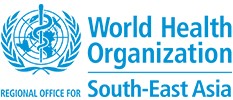On World AIDS Day, the WHO South-East Asia Region joins global calls to End inequalities and End AIDS – the theme of this year’s commemoration. HIV continues to be a major global health issue, having claimed 36.3 million lives globally so far. In 2020, around 680 000 people died from HIV-related causes and 1.5 million people acquired HIV globally. An estimated 38 million people were living with HIV infection. The South-East Asia Region is home to around 10% of all people living with HIV globally, and accounts for 12% of global AIDS-related mortality. Amid the COVID-19 response, the Region continues to take targeted action to maintain essential health services, including to prevent, detect and treat HIV. Today, as we show solidarity with people living with HIV, remember those who have died from AIDS-related illnesses, and express gratitude to those who are working to end AIDS, WHO urges all countries of the Region to intensify action to close remaining gaps, achieve the 95-95-95 targets, and end the inequalities, stigma and discrimination that keep the epidemic alive.

The Region has in recent years achieved significant progress against HIV, with all countries committed to achieving Sustainable Development Goal (SDG) 3.3 – by 2030, end the AIDS epidemic as a public health threat. Maldives, Sri Lanka and Thailand have achieved the elimination of mother-to-child transmission of HIV and syphilis. Between 2010 and 2020, the Region reduced annual new HIV infections by 46% and AIDS-related deaths by 64%. An estimated 61% of people living with HIV in the Region are now receiving life-long antiretroviral therapy. However, these and other successes are not uniform across countries and populations. Marginalized populations in particular continue to be underserved. Ending AIDS and associated inequalities – social, cultural and legal – requires high-level political commitment. In 2020, at a WHO-supported high-level meeting of ministers of health from across the Region, countries reiterated their commitment to achieve global and Regional targets and intensify efforts in this Decade of Action to end viral hepatitis, HIV and STIs as public health threats.
To achieve our time-bound targets and goals, several priorities must be addressed. First, recovering lost ground. Despite the Region’s best efforts, COVID-19-related disruptions have impacted access to HIV prevention and testing, whereas access to treatment has for the most part been maintained. To catch up on pre-pandemic progress, key populations must be reached, including through institutionalized community engagement initiatives. Measures to anticipate and mitigate further disruptions must be integrated into emergency preparedness and response plans, not only for pandemics such as COVID-19, but all other hazards. Second, securing sufficient and sustained domestic investments in HIV services, which must be accessible at the primary health care level. Such investments will not only increase equitable access to quality HIV services, but also strengthen health system resilience, complementing Region-wide efforts to build strong PHC-oriented health systems, as emphasized in a landmark resolution adopted at the Seventy-fourth session of the WHO Regional Committee in September 2021.
Third, leveraging high-impact innovations. In pilot studies conducted in several of the Region’s countries, newer tools such as HIV self-testing and pre-exposure prophylaxis have proven immensely valuable. To achieve maximum impact, these and other innovations must be incorporated into comprehensive service packages and rolled out at population level. Fourth, intensifying action to address the epidemic’s non-biomedical aspects, including legal and policy domains. In our Region and across the world, stigma, discrimination and other structural determinants and inequalities continue to impede progress, deepening health and social inequities, and obstructing sustainable social and economic development. Action is needed, and now. To facilitate progress in this Decade of Action, the Region will soon launch a new integrated Regional Action Plan for viral hepatitis, HIV and STIs (2022–2026), which will be aligned with forthcoming global health sector strategies on HIV, viral hepatitis and STIs, as well as the SDGs. The Plan will be accompanied by a Regional accountability framework, which will track WHO and country actions to achieve the 2025 interim targets and the 2030 goals, and will prioritize efforts to enhance community ownership, action and engagement. Together, we can and must succeed. On World AIDS Day, WHO reiterates its commitment to support all countries of the Region to end inequalities and end AIDS, leaving no one behind.
WHO’s South-East Asia Region comprises the following 11 Member States: Bangladesh, Bhutan, Democratic People’s Republic of Korea, India, Indonesia, Maldives, Myanmar, Nepal, Sri Lanka, Thailand and Timor-Leste.
